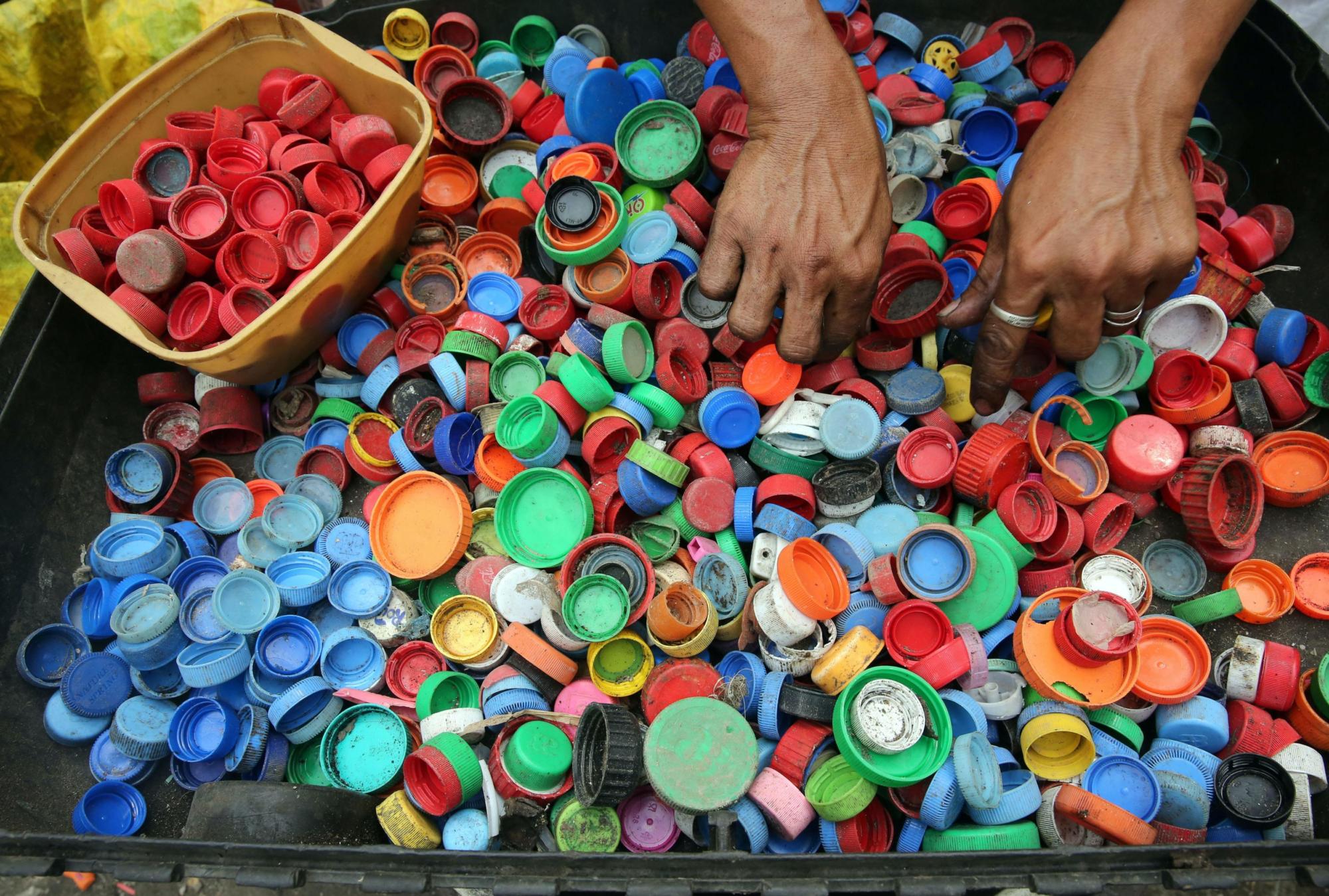
Blog post
The big circular economy myth – it’s not round, it’s a straight line
Energy Blog, 3 May 2022
When it comes to recycling and moving towards a circular economy, humankind has a long road ahead. Michael Ware explores the big gaps and discusses critical steps that could bring us closer to our goal.
Ask pretty much anybody you know what they think of the concept of the ‘circular economy’ and they will undoubtedly say it’s a good thing. Recycling and reusing assets to reduce the weight of our carbon footprint on the planet, what’s not to like? The problem with this concept is that, a bit like the tooth fairy giving you free money for your children’s molars, it’s a nice idea in theory but she doesn’t exist in reality. As we shall see below, the global economy is not circular; it’s a straight line of humanity relentlessly consuming the resources of the planet and recycling barely any of it.
Let’s start with some basic facts which I got from an excellent New Scientist article.
Global resource consumption is about 100.6 gigatons of ‘stuff’ per annum. This is a huge number (100,000,000,000 tons), so to put it into some sort of context, that’s 274 million tons a day or 3,173 tons per second of materials we are taking from the planet and either consuming as food, burning to make energy, or manufacturing into buildings and products. This ‘stuff’ is made up of minerals (50%), agricultural products (25%), fossil fuels (15%) and metal ores (10%).
These 100.6 gigatons of ‘stuff’ are then turned into a whole range of things including infrastructure (39%), food (21%), services (10%), health provision, (9%), travel (9%) and communications (6%). The latter is laptops phones, mobile masts, etc.
So far so good but obviously the key to a circular economy is for at least a big chunk of this stuff to be recycled and this is where the concept collapses. Out of the 100.6 gigatons, only about 31% is turned into durable things such as infrastructure, 21% is consumed as food (albeit with lot of waste), 37% is emitted to the atmosphere as gas or residual energy and 33% ends up as waste. To keep it meaningful, that last number is equivalent to 90.4 million tons a day of virgin ‘stuff’ being taken from the planet, consumed as ephemeral products and then being thrown away. Of this, only 8% is recycled and the remaining 83 million tons are mostly landfilled or burnt in energy from waste plants. Our much vaunted circular economy isn’t circular at all, it’s a straight line from consumption to waste. What’s more, the level of ‘stuff’ being consumed has shot up from 30 gigatons per annum in the 1970s to 100 gigatons per annum today and is likely to rise to at least 150 gigatons per annum by 2050.
These are pretty sobering facts. So, how can we move the dial on that paltry 8%? The answer is a combination of recycling and reducing consumption, though as we will see, the latter is far less politically palatable.
Starting with recycling, an obvious starting point is for manufacturers to make things that are less complex to recycle by using fewer combinations of materials. A mobile phone for example can be made up of more than 30 different materials and the process of separating these to recover and reuse is complex and not really cost effective. The relative economics gets worse as products get cheaper. For instance, your humble water bottle costing less than five pence to make is typically made up of two to three different types of plastic (polyethylene for the bottle, PVC for the cap, laminated paper for the label) and once you start mixing plastics on a five pence product, it’s very hard to separate them economically.
A second step is to make things easier to repair so they last longer but this is anathema to most manufacturers who would much rather you bought a new version of what you already have. The average life of most domestic appliances is between five to seven years at most and this is going down every year. As products get more complex, (cars, phones, etc.) they become harder to repair and often manufacturers actively discourage repairs through invalidating warranties, intellectual property rights on core components and restricting the supply of spare parts. There is potentially a role for the government here in terms of legislating for the provision of spare parts or forcing manufacturers to be more transparent about how easy their products are to repair.
The final step is to ‘encourage’ or at a push force recycling back onto the production process.
Extended producer responsibility (EPR) schemes aim to tackle waste by placing the onus on the producers of products. This can be done by either setting a percentage for the minimal amount of recycled materials used in the production of the original product or by implementing “take back programs” where manufacturers are responsible for either taking back their products from end users at the end of the product’s useful life or by partially financing local collection and recycling infrastructure.
Take back schemes seem to be partly successful particularly in cars, electronics and consumer goods, but they are far from globally adapted and it’s not always obvious that the ‘taken back’ product is actually recycled and not just quietly dumped in landfills as part of the production costs of making new products from scratch. A lot of recycled products have a very low value so there is limited incentive for companies to recycle. Mixed coloured glass, for example, is currently trading at a negative GBP 19 per ton so the waste collectors have to pay to have it taken away. I doubt very much whether it finds its way back into new glass.
Despite these potential solutions, it is clear that they are not really working to create the mythical circular economy. Recycling rates for household waste in the UK have plateaued at about 45% for years now and are actually starting to go down as we buy ever cheaper goods online. Commercial recycling of packaging waste is better at 67% but the percentage of plastic and paper recycled remains stubbornly below 45%. The highest performing country in the world, Germany only recycles 56% of its waste and landfills and burns the rest so at best they have a semi-circular economy rather than a circular one
A more radical solution is to change the consumer’s relationship with products and develop a more service based approach where consumers ‘rent’ a product rather than own it. A good example is the ecosystem of car sharing companies where drivers rent a car by the hour rather than having one sitting in their driveway. In theory, this means we need less cars but the take up of these schemes is very limited so far. For instance, Zip car only has a fleet of 10,000 cars compared to the UK privately owned car fleet of 39 million.
Changing consumer behaviour to consume less and make their possessions last by repairing more is a tricky area for governments. The aspirational ideal of the nuclear family living in a big detached house with a couple of cars on the drive invariably leads to people owning a huge amount of stuff. According to the LA Times, the average American household has 300,000 possessions and the size of a US family home has tripled in the last 50 years. It’s easy of course to blame the feckless greedy Americans but Europe has the second highest consumer per capita in the world and this has increased since 2000 whilst US consumption per head has declined. Counter intuitively, the most environmentally friendly members of any given population are its’ prisoners; they live in tiny rooms, share their kitchens and communal spaces and don’t own cars or go on holiday. Apart from putting everyone else in prison, it’s very hard to see what governments can actually do to reduce consumption other than through taxes on purchases (VAT) or waste (landfill tax). However, taxes on consumption disproportionally affect lower income households who spend a higher percentage of their income buying things. There is no serious political appetite for more radical policy ideas (limiting house sizes, asset-based taxes, etc.) and growing Gross Domestic Product (and hence increasing consumption) remains the central plank of most governments’ economic policies.
In conclusion, it’s obvious we don’t live in a circular global economy, we live in a linear one based on relentless and growing consumption of the planet’s finite materials and this is what most people and their governments actually want to do despite warm words to the contrary. Increasing global recycling from the paltry 8% achieved is part of the answer and the Germans at least have shown us what is possible but they are an outlier. However, a bigger part of the solution must be to reduce our consumption and nobody is taking this very seriously as a macro policy idea. There are very few votes in telling the electorate they cannot change their car and upgrade their phone every few years and for a lot of people in the developing world, it’s understandably more an issue of catching up with Western consumption rates than slowing down and increasing the gap from where they are in relative terms. It’s unclear how sustainable our lifestyles are in the long term and to an alien observer, we probably seem to be living in a mass experiment to discover how far is too far when it comes to using up the resources of our little blue planet. I don’t know the answer to this but I am guessing 274 million tons a day is approaching some sort of limit.

